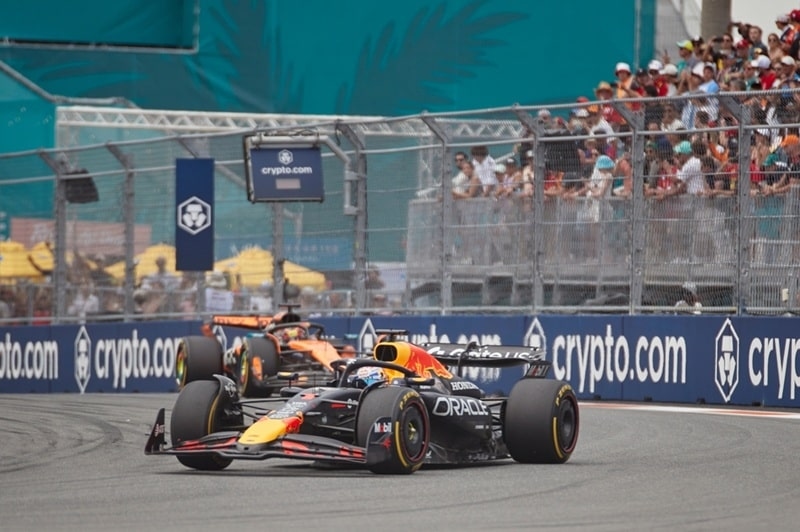The Evolution Of Formula 1 Racing: A Historical Overview

Formula One, the pinnacle of motorsport, has captivated audiences around the world for decades with its high-speed thrills, cutting-edge technology, and iconic moments. As we delve into the rich history and evolution of Formula One, we uncover a fascinating story of innovation, rivalry, and the relentless pursuit of excellence that has defined this sport since its inception.
Origins and Birth of Formula One
The roots of Formula One can be traced back to the early 20th century when motor racing emerged as a testbed for automotive technology. However, it was in the post-World War II era that the idea of a unified and standardized racing series took shape. The inaugural Formula One World Championship race was held at Silverstone, England, in 1950.
The 1950s - The Golden Age
The early years of Formula One witnessed a diverse array of racing machinery, with teams fielding a variety of cars, including the legendary Alfa Romeo, Ferrari, and Mercedes-Benz. Juan Manuel Fangio and Alberto Ascari emerged as early titans, dominating the championship in a titanic battle that set the stage for decades of fierce competition. The early years of Formula One were characterized by a sense of camaraderie and an adventurous spirit. The cars were a far cry from the sleek, aerodynamic machines we see today. They were open-cockpit, cigar-shaped vehicles, lacking the advanced safety features of modern cars. Drivers faced immense risks, and fatalities were tragically common.
The 1960s - Innovation and Technological Advancements
The 1960s marked a period of significant technological advancements in Formula One. Aerodynamics became a crucial aspect of car design, and the introduction of rear-engine configurations revolutionized the sport. Lotus, led by the visionary Colin Chapman, pioneered the use of monocoque chassis and brought about a paradigm shift in design philosophy.
The 1970s - An Era of Icons
The 1970s saw the rise of iconic figures such as Jackie Stewart, Emerson Fittipaldi, and Niki Lauda. Stewart, known for his smooth driving style and commitment to safety, played a pivotal role in improving track safety standards. Meanwhile, Fittipaldi and Lauda engaged in intense battles on the track, epitomizing the competitive spirit of Formula One. The 1970s witnessed significant technological advancements in Formula One. The introduction of aerodynamics, wings, and ground-effect technology transformed the look and performance of the cars. Lotus, under the leadership of the innovative Colin Chapman, played a pivotal role in pushing the boundaries of engineering. Ground-effect cars, with their inverted wing profiles, generated increased downforce, allowing for better traction and cornering speeds. However, this era was also marked by tragedies, notably the death of double world champion Jochen Rindt in 1970 and the infamous Niki Lauda crash at the Nrburgring in 1976, which highlighted the need for improved safety measures.
The 1980s - Turbocharged Revolution
The 1980s witnessed a turbocharged revolution that transformed the dynamics of Formula One racing. Teams like McLaren, Williams, and Ferrari embraced turbocharged engines, unleashing unprecedented levels of power. Ayrton Senna and Alain Prost emerged as fierce rivals, creating one of the most memorable rivalries in the history of the sport. They emerged as household names, engaging in intense on-track battles that would become legendary.
The 1990s - Technological Boom and Safety Innovations
The 1990s marked a period of remarkable technological advancements, with the introduction of semi-automatic gearboxes, traction control, and active suspension systems. The era also saw the dominance of Michael Schumacher, who secured seven world championships, a record that stood for over a decade. However, this era was also marred by tragic accidents, most notably the death of Ayrton Senna in 1994. In response, the sport underwent a comprehensive overhaul to prioritize safety, leading to the implementation of various safety measures. Formula One expanded its global footprint during this period, adding races in new and successful locations in Asia like Malaysia, Bahrain, and China. The sport's popularity soared, attracting a diverse and passionate fanbase from around the world. As Formula One entered the new millennium, the sport underwent a global expansion, with races in Asia and the Middle East augmenting the traditional European calendar. Commercialization became a central theme as partnerships with major corporations and sponsors elevated the sport's profile. Eccentric personalities like Bernie Ecclestone played instrumental roles in shaping Formula One as a global entertainment phenomenon.
The 2000s - Dominance of Michael Schumacher
The early 2000s witnessed the unparalleled dominance of Michael Schumacher and Scuderia Ferrari. Schumacher's technical prowess, combined with Ferrari's strategic brilliance, resulted in a record-breaking streak of championships. The era showcased the importance of team synergy and technical excellence in Formula One success. Technological innovations, such as the introduction of the Kinetic Energy Recovery System (KERS) and later, the hybrid power units, showcased Formula One's commitment to sustainability and efficiency.
The 2010s - Hybrid Power Units and Environmental Consciousness
The introduction of hybrid power units in 2014 marked a significant shift towards environmental consciousness in Formula One. The sport embraced hybrid technology, combining traditional internal combustion engines with electric power. Mercedes emerged as the dominant force, showcasing the importance of innovation and adaptability in the ever-evolving landscape of Formula One. Mercedes secured consecutive championships with drivers Lewis Hamilton and Nico Rosberg. The era also saw the rise of new talents like Max Verstappen and Charles Leclerc, injecting fresh excitement into the sport.
Conclusion
The history and evolution of Formula One reflect a relentless pursuit of excellence, pushing the boundaries of technology, safety, and entertainment. From the daring pioneers of the 1950s to the high-tech, global phenomenon of today that includes drivers with massive social media followings, Formula One has continuously adapted to the changing times while retaining its essence of speed, competition, and innovation. As the sport looks towards the future, fans can only anticipate more thrilling races, iconic moments, and the emergence of new legends in this ever-evolving world of Formula One racing.
This content was created by AI




